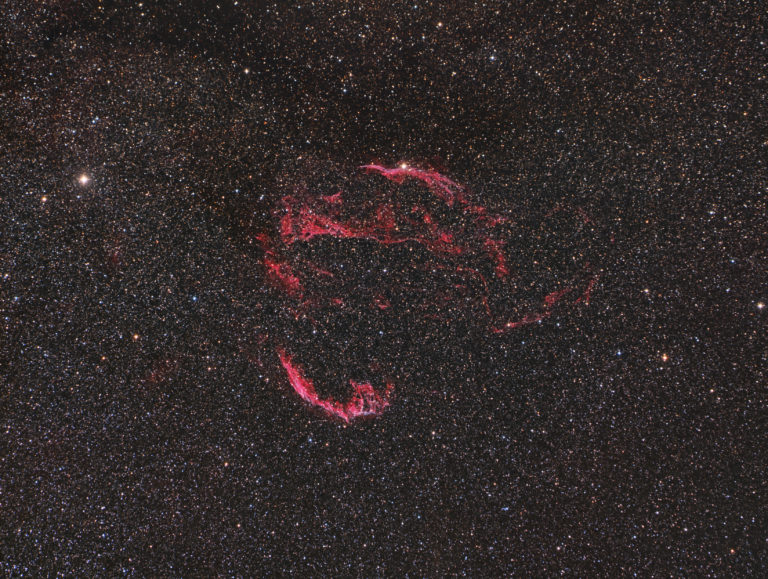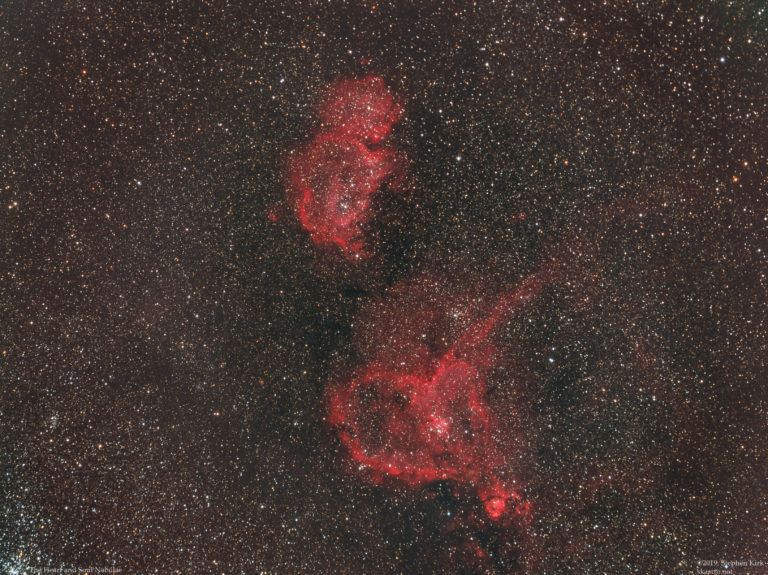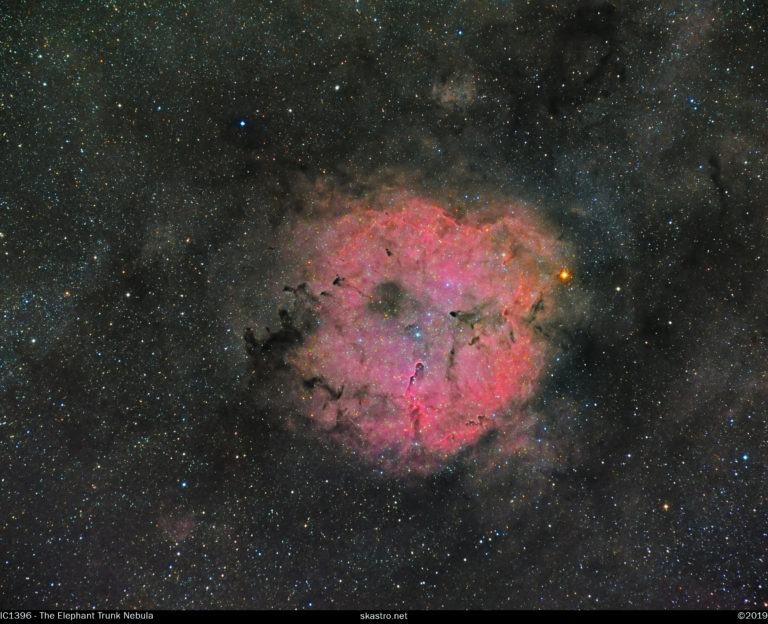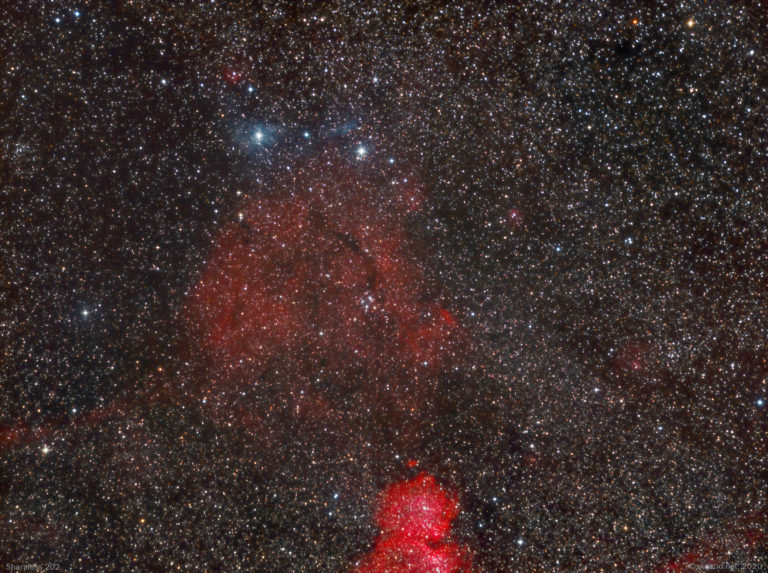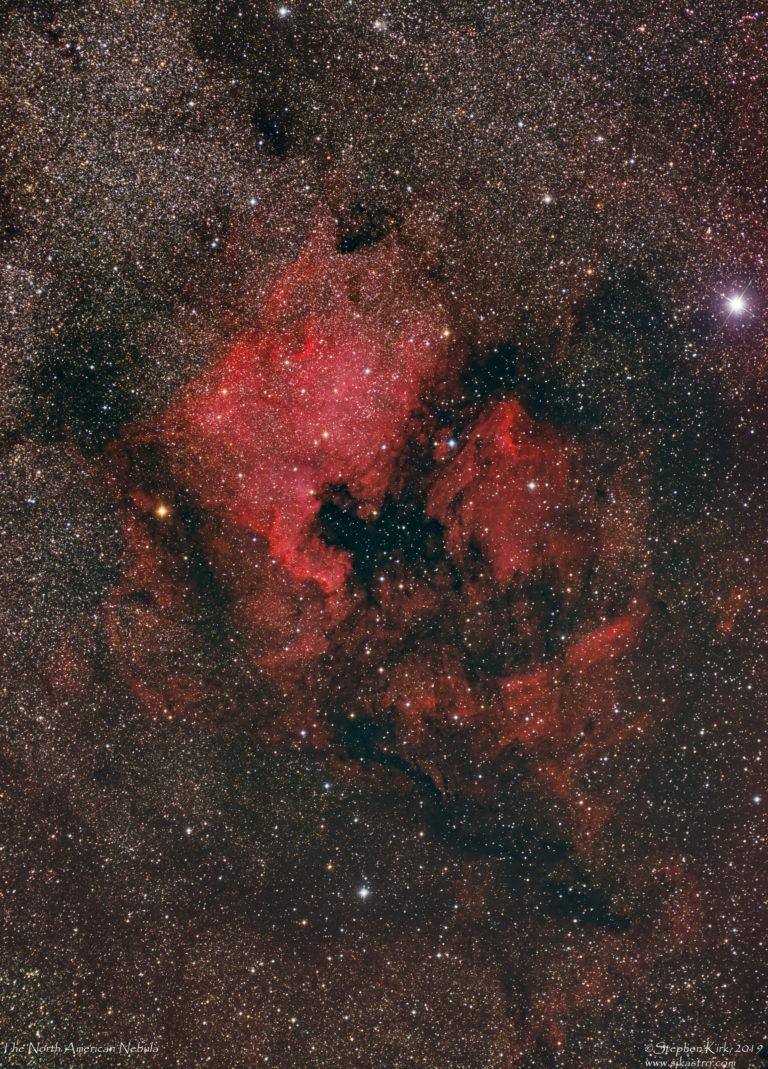The Veil Nebula in Cygnus is the remnant of a supernova of a star about 20 times the mass of the sun that exploded about 20000 years ago. The nebula is a huge, very faint and diffuse object, about six moon widths in diameter and is located about 2500 light years away. Very few telescopes can capture the entire Veil Nebula complex due to the huge angular size that it presents on the sky and creating a multi-frame mosaic is a very time consuming process, especially in the UK where clear nights are such a rare and premium time. This makes DSLR lenses ideal and few are better or as cost effective as the Samyang 135mm that was used to capture this image. The Veil Nebula in HaRGB Image Technical Details The image was captured from my backyard in Nottingham in the UK on the nights of the 13th and…
The Heart and Soul Nebulae are a well known and famous pairing of Nebulae in the late summer/autumn sky of the Northern Hemisphere. These nebulae are located far away – 7500 light years – in the Perseus arm of the galaxy, further out from the core of the galaxy than the Sun and are vast star forming regions rich in Hydrogen Alpha that gives the images the intense red glow.All image data collected with a Samyang 135mm lens at F2.8 with a Moravian G2-8300 CCD camera. Below is the RGB image gathered with Astrodon RGB filters. All binned 1×1: Red 14 x 300s; Green 13 x 300s; Blue 14 x 300s. This gives an RGB integration time of 210 minutes or three and a half hours.The picture looks nice but it does lack punch and vibrancy as it stands. It needs the addition of the Hydrogen Alpha data that will…
IC1396 IC1396 – “the Elephant’s Trunk Nebula” is a huge emission nebula in the constellation of Cepheus, about 2500 light years away. It has a huge angular diameter of about 2 x 3 degrees so it requires a wide field telescope/lens to capture it in its entirety. It is a very popular imaging target both in a wide field setting like this picture and also as close up views of the “trunk” that you can see in the image at the 6 o’clock position. RGB only version Annotated Version Image Technical Data Image data acquired September 13th 2019 from my backyard in Nottingham, UK. This image was taken with my Samyang 135mm lens with G2-8300 CCD camera and Astrodon RGBHa filters on NEQ6 mount. Everything is 300s in this image and binned 1×1: Ha (3nm) x 13; Red x 12; Green x 8; Blue x 14
Sh2-202 This image shows Sh2-202 glowing to the left of centre with the top of the Soul Nebula at the bottom. Several other Sharpless Catalogue objects are also visible together with a few objects from the VdB catalogue. Sh2-202 Annotated Image Technical Data This image was captured from my back yard with my widefield rig consisting of my Samyang 135mm lens with Moravian Instruments G2-8300 CCD camera and Astrodon RGBHa filters. I used my NEQ6 mount. The data was acquired when the object was overhead from Nottingham UK on 29 November 2019. All data acquired in one imaging run and all exposures binned 1×1 and 300seconds: Ha(3nm) 180 mins, Red>50mins, Blue>45mins,Green>45mins I hope you like it!
Hydrogen Alpha North American and Pelican Nebulae Above is 120 minutes worth of Hydrogen Alpha data captured in five minute exposures with an Astrodon Ha 3nm filter and a Samyang 135mm camera lens on a Moravian Instruments G2-8300 CCD camera. RGB data I then captured one hour in each of the Astrodon R,G and B filters with the same rig as detailed for the Ha image, again in five minute exposures. However, use of the superb Astrodon E series RGB filters produce a nice image and the colours are brought out quite nicely although it lacks a bit of punch and vibrancy. The bright star to the right is Deneb. HaRGB image In Photoshop I broke out the red channel and then blended it as a 50:50 mix with the Ha image (at the top of this page) before recombining back into RGB. I also saved a copy of this…

